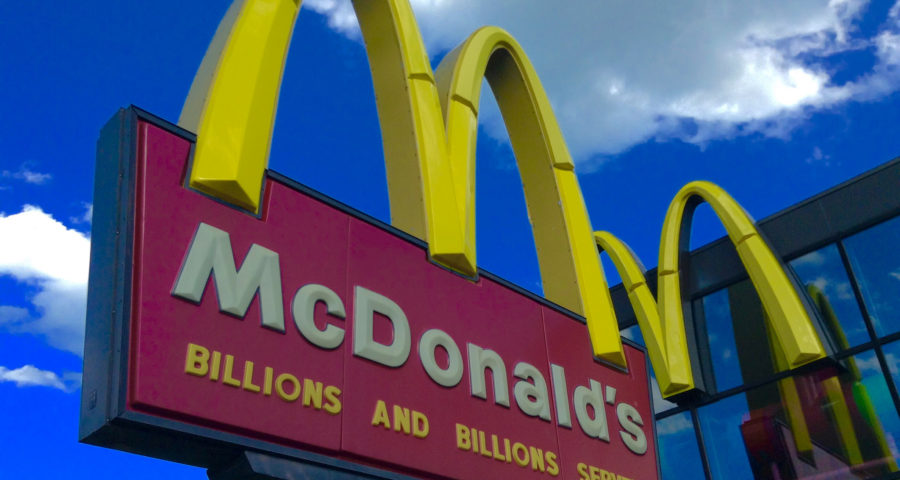(By John Voket – Associate Editor/Contributor) The universally-known global food service McDonald’s may have served billions and billions, but each and every one of those billions of customers inevitably tossed a little bit of McDonald’s back into the solid waste stream since the mega franchise opened its first few outlets in 1955.
Flash forward about a half-century and the company not only started acknowledging its packaging and other wasteful practices, but its obligation to to work toward minimizing waste in a ‘super-sized’ way!
The latest news on that front broke January 17 when McDonald’s issued a formal global pledge to make its packaging 100 percent green (all consumer packaging out of renewable, recyclable and certified materials) by 2025.
Not to stop at that, McDonald’s recently announced plans to eliminate foam packaging throughout its global supply chain by the end of 2018; to add recycling bins to all of its stores; and to serve only coffee from certified sustainable sources.
But it’s not just about the stuff that walks out of the restaurants, either.
The company has integrated energy-efficient appliances cutting overall U.S. energy consumption by 25 percent; and is setting up green parking areas exclusively for hybrid vehicles designed with permeable concrete so they have the capability of recharging the vehicles while cleaning groundwater.
Since joining forces with the Environmental Defense Fund in 1990, McDonald’s says it has eliminated more than 300 million pounds of packaging, recycled 1 million tons of corrugated boxes and reduced waste by 30 percent.
Along the way McDonald’s also picked up preferred certification from the Forest Stewardship Council (FSC), which sets environmental, economic and social standards for all its sourced materials.
Last July at the 2017 GreenBiz conference, Townsend Bailey who is director of supply chain sustainability at McDonald’s U.S. appeared in an FSC session about its transitioning all 14,000 of their restaurants to FSC-certified hot cups.
“We can have Rainforest Alliance Certified espresso, we can have great sustainability programs in our supply chain, we can have great tasting, high quality coffee, but if we try to tell them it’s high quality and put it in a foam cup, they don’t believe it,” said Bailey in an FSC post-conference report.
A Harvard Business School bulletin recently broadened the focus, pointing out that McDonald’s France converted its iconic red and yellow logo to a golden arch on a green background in 2010, and they’ve been forwarding high profile earth-conscious initiatives ever since.
Their first initiative was to slow down delivery trucks to 50 mph from the legal 60.1 mph, trading longer delivery times for substantial fuel cost reductions and corresponding greenhouse gas emissions.
Today at McDonald’s France, they are recycling cooking oil into fleet vehicle fuel, using electric shuttles for deliveries between distribution hubs and restaurants, and refitting long-range supply trucks to maximize every millimeter – enabling fewer vehicles to make more efficient trips.
And voilà!
Instituting these and other practices, it took just 10 years for McDonald’s France to cut its CO2 emission per meal served – in half!
Learn more at: http://corporate.mcdonalds.com/mcd/sustainability.html
